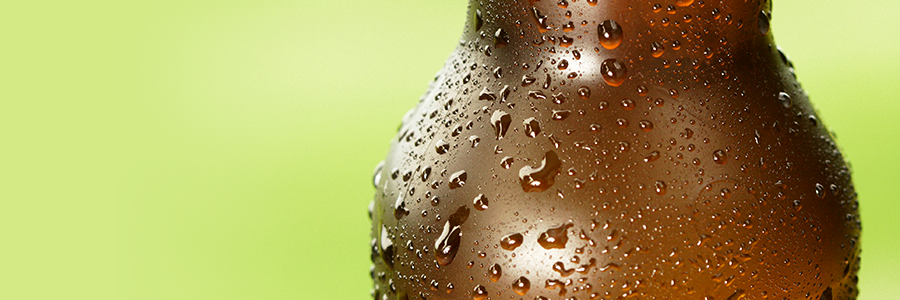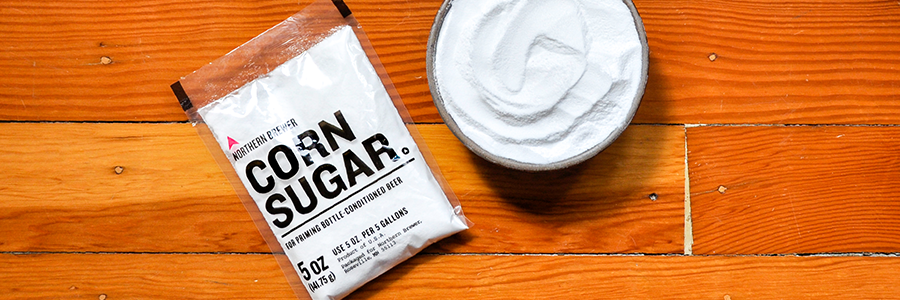February 24, 2020
How to Carbonate Beer in Bottles and Kegs

WHAT IS CARBONATION?
In the US, carbonation is described in terms of volumes of carbon dioxide, or CO2 for short. There is a lot of argument about the actual meaning of this term but needless to say, the more volumes of gas the more carbonated the liquid will be. For example, English cask beer can be about 1.5 volumes whereas say champagne can be up towards 7.0 volumes. Other parts of the world use grams/Liter of which there are about 2.0g/L per volume of CO2.Quite simply, CO2 is soluble in a solution in an inverse relationship to the temperature of the solution. What this means is that the colder the liquid is the more CO2 can be held in solution. This is very important when you get to calculating your volumes of CO2 because the colder your finished beverage is the more residual CO2 will be in solution. This is one of the main reasons that beers are over-carbonated. Read more about why you could have an over-carbonated beer.

BOTTLE CONDITIONED BEER
Bottle conditioning is the process of naturally carbonating beer by adding a priming solution (water + some type of sugar) to the flat beer immediately before bottling to initiate a "re-fermentation" in the bottle. The CO2 produced from the re-fermentation in the beer bottle is absorbed into the beer, creating carbonation.
The amount of carbonation in the finished beer can be controlled by adjusting the amount of priming sugar in the priming solution. After priming and filling, the newly bottled beer should be stored at 70-75F for 2-3 weeks or until fully carbonated. After this time the bottles can be chilled or stored below 60 degrees to stabilize the beer.
Bottle conditioning also has an effect on the flavor and aroma of the beer due to the presence of active yeast in the bottle. The yeast in the bottle is able to reabsorb or process byproducts from fermentation eventually rounding out or mellowing the flavors. It can also extend the shelf life of beer by delaying the staling effects of oxidation.
SHOP BOTTLING SUPPLIES
HOW TO CARBONATE BEER IN A KEG
Carbonating your beer, cider, or soda in kegs can be simple, easy, and quick. There are a few things to know in advance, and a few different methods. This guide will go over them for you.
Before we begin, make sure you have the necessary equipment for carbonating a keg.
- Have your beer transferred to a keg.
- Make sure you have the necessary tubing and keg disconnects for the gas and liquid.
- The C02 Gas Cylinder
- The C02 beer regulator for adjusting carbonation levels
- A force carbonation chart to ensure perfect carbonation
FORCE CARBONATION
Most carbonation in kegs is done using pressurized CO2 from a gas cylinder, a process called force carbonation. The fastest results can be achieved when the beer in the keg is at a cold temperature. This will let the CO2 diffuse into the beer more efficiently and at a faster rate.
The most accurate and easiest method for force carbonating is often referred to as the “set it and forget it method.” Select your refrigerator temperature and your desired carbonation rate set your CO2 regulator to that pressure, and wait 5-10 days for the beer to carbonate.
FORCE CARBONATE YOUR BEER FASTER
A more accelerated method of force carbonation involves putting 30-40 PSI of CO2 into your chilled keg of beer and shaking or rocking the keg to diffuse the gas at a faster rate. Depending on how cold your beer is, and how much you agitate the beer, you can have your beer carbonated anywhere from 12 hours to 3 days. Once it is carbonated, dial your CO2 regulator down to serving pressure, and vent excess CO2 out of your keg. It is advised that you wait an hour or two for the beer to settle down before serving.

CARBONATING BOTTLES AND KEGS WITH PRIMING SUGAR
Many different types of sugar can be used for bottle carbonation, including corn sugar (dextrose), table sugar (sucrose), or dry malt extract (DME). Take a look at the sugars that can be used for carbonating beer.
In order to properly determine the amount of sugar to use, you need to take into account the temperature of the beer and the volume as well as the type of sugar and the level of carbonation desired. Our Priming Sugar Calculator is a great resource for determining the amount of sugar to use.
Read More About Carbonating Beer:
Why Didn't My Beer Carbonate?
A few key issues why your beer didn't carbonate
The Complete Guide to Kegging Vs. Bottling
What's right for you
Over Carbonated Beer
Dial in your carbonation
How to Pour Beer from the Tap Without the Foam
Pour a perfect pint
Carbonating Beer Using Specialty Techniques
Looking beyond priming sugar and CO2
Begin or continue your homebrew education with Northern Brewer University and our Homebrew Video Courses.

